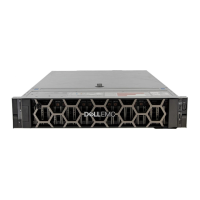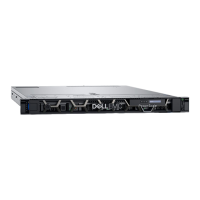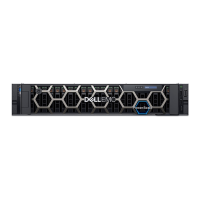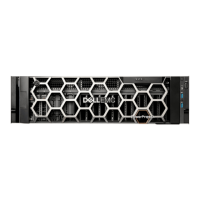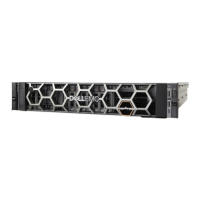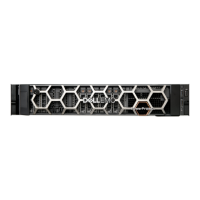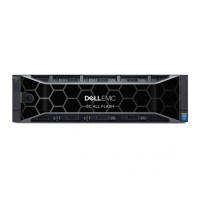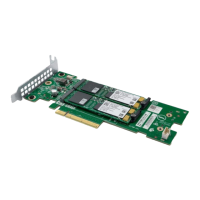6. Click OK to continue.
If you chose DHCP and the controllers successfully obtained IP addresses from the DHCP server, the new IP addresses are displayed.
Record the new addresses and sign out to use the new IP address to access the MESM.
Set IPv6 values for network ports
Perform the following steps to set IPv6 addresses for the network ports:
1. Perform one of the following to access network options:
• In the Home topic, select Action > System Settings, and then click the Network tab.
• In the System topic, select Action > System Settings, and then click the Network tab.
2. Select the IPv6 tab. IPv6 uses 128-bit addresses.
3. Select the type of IP address to use for each controller. Choose Source > manual to enter up to four static IP addresses for each
controller, or choose Source > auto to have the system automatically obtain values.
4. If you chose manual, perform the following:
• Enter the unique IP address, gateway value, and address for each controller.
• Record the IP address that you entered.
• Click Add.
5. Click Add Address to continue adding up to four IP addresses.
NOTE: The following IP addresses are reserved for internal use by the storage system: 169.254.255.1, 169.254.255.2,
169.254.255.3, 169.254.255.4, and 127.0.0.1. Because these addresses are routable, do not use them anywhere in
your network.
6. Perform one of the following:
• To save your settings and continue configuring your system, click Apply.
• To save your settings and close the panel, click Apply and Close.
A confirmation panel is displayed.
7. Click Yes to save your changes. Otherwise, click No.
8. Sign out to use the new IP addresses to access the MESM.
Notifications tab—Setting system notification settings
Dell EMC recommends enabling at least one notification service to monitor the system.
Send email notifications
Perform the following steps to enable email notifications:
1. In the Welcome panel, select System Settings, and then click the Notifications tab.
2. Select the Email tab and ensure that the SMTP Server and SMTP Domain options are set.
3. Set the email notification:
• To enable email notifications, select the Enable Email Notifications check box.
• To disable email notifications, clear the Enable Email Notifications check box.
4. If email notification is enabled, select the minimum severity for which the system should send email notifications: Critical (only); Error
(and Critical); Warning (and Error and Critical); Resolved (and Error, Critical, and Warning); Informational (all).
5. If email notification is enabled, in one or more of the Email Address fields enter an email address to which the system should send
notifications. Each email address must use the format user-name@domain-name. Each email address can have a maximum of 320
bytes. For example: Admin@mydomain.com or IT-team@mydomain.com.
6. Perform one of the following:
• To save your settings and continue configuring your system, click Apply.
• To save your settings and close the panel, click Apply and Close.
A confirmation panel is displayed.
7. Click OK to save your changes. Otherwise, click Cancel.
Perform system and storage setup
35

